Anyone who has spent countless hours fishing is most likely searching for a way to throw a spinning reel further and more effectively, offering them a chance to catch larger and more elusive fish. Even with the top of the line spinning the reel, you may be searching for ways to make it go faster so that you can catch more fish. Do you know how to cast farther with a spinning reel?
How To Cast Farther With A Spinning Reel
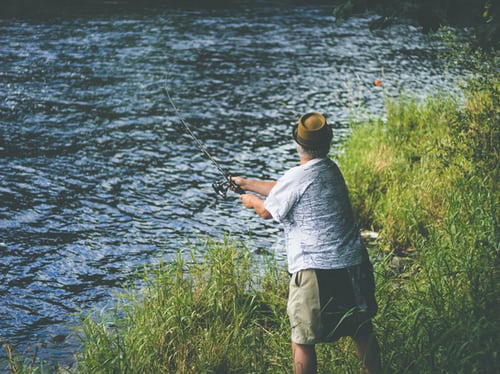
Casting is the first step in spin-fishing once you’ve set up your gear. The longer the casting or, the more precise the casting, the more likely you are to catch a fish, most of the time. There are quite a few variables that can influence your casting’s distance and precision, and it’s not just a matter of technique. The environments and facilities that you use also play a role. Here are some tips on how to cast more with a spinning rod.
A. How To Cast Farther With A Spinning Reel: The Technic
Let’s start by discussing the best way to cast a spinning rod to improve your accuracy and distance. First, we need to talk about how the rod’s physics is working in casting. The rod is filled with power on your backcast, and that is the power you want to pass to your forward cast and then to the lure.
You want to hold the rod with one hand close to the reel and one hand to the ass of the rod. When you cast, take the rod from a horizontal position to a vertical position, to about 12 on the clock face. Do this by pulling back with your upper hand and pressing forward with your lower hand when the rod is 12, pause. This pause loads the rod and fills it with power.
You’ll know that the rod is full of energy and that the top portion is flexing back behind you. If the rod has been loaded, push your top hand forward and pull your bottom hand back to move the power to your forward cast. It’s supposed to feel like throwing a dart and point the rod where you want the lure to go.
Now, it’s time to put this strength in your lure. It’s all about timing. Once the rod is around two on the clock face, you want to release the line from your finger, and the power shifts from the rod to the lure. Luckily, you’ve made a long, accurate cast. Here’s a video to prove it.
B. Rod Action & Load
Imagine that you were firing a slingshot. The more you pull the rubber back or fill the rubber, the more your shot goes. It’s exactly the same thing with a fishing rod. The more the rod charges, the more power inside it, and if that power is transmitted correctly, the more power you cast. But how do all of this translate into the rod that you own and its action?
A fast-acting, heavy-powered rod can only bend in the blank’s top third, not load that much. A rod with medium action and strength bends in the top half of the blank and loads a lot. A rod with light action can bend all the way down the blank, but if it doesn’t have enough power, it may break under tension or move power away. The best set-up for remote casting is a medium motion, medium power rod.
C. Rod Duration
Rod length counts in terms of distance, which is why you see guys on the beach with 12-14 ft rods. The longer the rod, the more you’re going to cast. If you take two rods of the same power and movement, the longer one, you cast the shorter one.
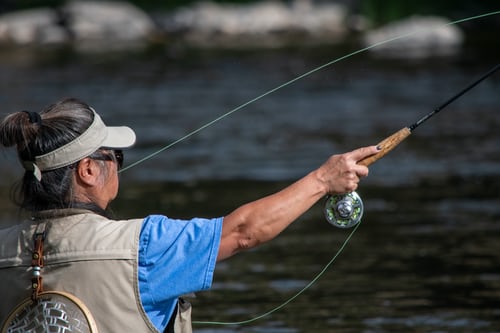
D. Your Line
Your line is making a difference. The lighter and smaller it is, the more distance and precision you’re going to get. This is because the thinner line causes less drag on both the air and the rod. If you are using mono, the 10 lb line is stronger than the 20 lb line. The easiest line to use is a woven line. Braid is super thin and light, and without a doubt, will improve your distance and accuracy.
E. Lure Weight
This is very clear, the heavier your lure, the more your rod is primed, and that means a longer cast. You’ve probably come across this before when you cast a light lure on a light rod. You don’t get a lot of distance. Casting a heavier lure on a long rod gives you a great deal of reach.
F. Profile Of Lure
If you use a bulky lure, like a spinnerbait with skirts and blades, it will create a lot of air resistance once it has been cast. The more aerodynamic, the longer your casting is going to be. A 1/4 ounce spoon casts more than a 3/8 ounce spinnerbait, even though the spinnerbait is heavier. That is due to the resistance of the spinner to the air. If you need a longer casting in a certain case, change it and put on a more aerodynamic lure.
G. Wind
Wind may be your adversary or a friend of yours. If the wind is behind you, your casting is going much farther than normal. If you turn and cast across the wind, you’ll catch the bait and create more drag on the line. This will shorten your casting, and you’re going to have to compensate for the wind to get the accuracy you want. In short, take advantage of the wind whenever you can.
H. More Line
This is the toughest, and perhaps the most underrated, a technique to add distance to your casting. This is because it goes against what you were taught when you first started to cast, and no one has told you that there are different techniques when you get good. When you start a cast, you’re going to get 1-2 ft of the line out and get out of there. Once you’ve mastered this, try starting with more line out and slowly making it longer and longer. So why is that allowing you to cast further?
The more line you’ve got out, the wider the arc that your rod, line, and lure are going to create on your backcast. This arc is converted into force. The larger the arc, the more momentum, the more strength, the higher the load on your rod. Easy no, huh? Letting more line out at the start of your casting will load your rod more, giving you more power and thus more distance. Be careful and look behind you, though, as you’re going to have a lot of hooks back in there that are a little bit of a threat.
Three tips to improve your casting distance.
Casting distance can be an important aid in the search for more and more trout. Longer casts allow you to remain farther away from your intended target (and minimize the risk of frightening the fish) and also allow some bait, such as crankbaits, to dive deeper and perform better.
While the biggest factor in casting distance is definitely time on the water – think practice makes better – there are also a few factors you can manage that will help you get more distance from your castings.
How To Cast Farther With A Spinning Reel: Best Ways To Optimize Your Casting Distance
Do you know how to cast farther with a spinning reel? Here are some of the tips you should know.
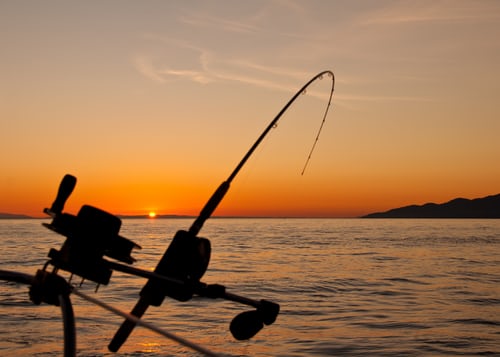
1. Using The Right Rod Of The Reel.
To optimize the casting distance, you need to select the right rod, reel, and line. They all need to be perfectly coordinated to get the best out of any product. Use too light a rod, and it won’t have the strength to push the bait a long-distance away. Too heavy a rod is just as bad, as it’s not going to load properly, and you’re going to come up short. Pay attention to the rod’s weight rating – and use lures that fall within the accepted range. Another way to get more distance is to make sure the spool of your reel is loaded. A full spool means that more lines can come out of the spool each turn and give you longer casts. Finally, make sure the reels are washed and lubricated, as friction in the bearings is easily eaten away at a casting distance.
2. Please Use Lighter Thread.
Note this when spooling up – the same plug on the same rod and reel would be cast further with a 12-pound test line than 20, and so on. Don’t go too light. You’ll risk breakouts, but top anglers regularly fish diving plugs on a 10-pound or 12-pound line to get full casting size. A lighter line can also help your plugs hit steeper and deeper dive curves.
3. Don’t Throw Yourself As Hard.
This rule applies most specifically to baitcasting, but for some reason, many anglers think casting needs to be a home run swing every time. In fact, casting as hard as possible is possibly costing you a distance due to the spool’s unbalanced speed. As the spool spins with the bait caster, the longer and smoother it spins, the longer the spool spins. Instead of swinging around the fences, try the smoothness – it’ll pay off easily with longer distances.
How To Cast Farther With A Spinning Reel: Six Of The Benefits Of Spinning Reel
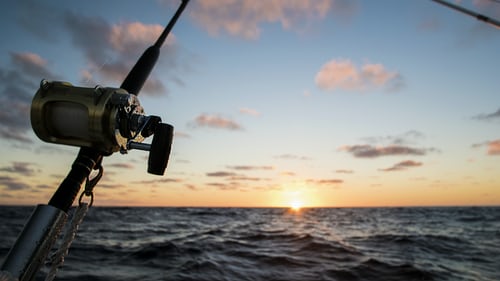
There have been many changes and developments in fishing gear over the last century, but spinning is still a staple in the ‘€’ sportfishing industry, and for a good reason. Conventional spinning gear offers many advantages over baitcasting gear, particularly in the field of light fishing.
First
For instance, spinning will throw lighter lures away. From weightless bait to lures up to 1/4 of an ounce, the spinning rod and the reel are hard to beat for a stretch. Baitcaster enthusiasts can do better “lure control” with heavier 1/2-to 1-ounce lures, but when it comes to casting a lure that weighs just 1/16th of an ounce, they can softly hit a spinning combo.
For this reason, there is no match for casting 1/32 ounce of Beetle Spins and jigs for panfish or light spinners for trout. In the saltwater flats, sailing a 1/8-ounce jig into a pothole at 90 feet is difficult to do on a bait caster. Even in the baitcaster-dominated world of pro-bass fishing, the world’s top pros still use spinning hooks daily for shaky heads, drop-shots, and light dicks and crankbaits.
Second
If the wind is a concern at all, the benefit of spinning is much greater. Backlashes bloom in baitcasters that are tossed into the storm. Casting in or out of the wind is much more efficient with spinning, particularly if the lures are on the light side.
Third
If you want to skip lures under a low hanging cover such as docks, piers, bushes, or low limbs of cypress trees, then spinning is again a baitcasting gear. Yeah, experienced bass anglers who fish for a living will skip lures with baitcasters, but it takes hundreds of hours of practice to be backlash-free when you skip baitcasters. If you’re looking to start skipping the lures immediately, without practice and backlashes, spinning the lures is even more forgiving.
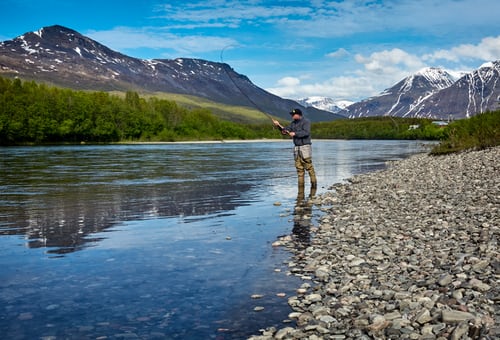
Fourth
The often ignored advantage of spinning is that it helps your lure to sink down straighter without the “pendulum effect” of the rotational spool seen on the baitcasters. When the lure sinks out of the baitcaster, it meets resistance in the form of pulling the rotational spool, which causes the pendulum to lure towards the angler as it sinks. That’s why anglers using baitcasters in deeper water often strip off the spool by hand to feed the falling lure’s resistance-free line so that it’s free to fall.
As the line on the spinning reel unrolls easily from the fixed spool, it meets much less resistance than the pull required to hold the revolving spool going. This is important when fishing vertically, such as pilings, standing trees, steep bluffs, seawalls, or tall deep-water vegetation. It’s also important when targeting current breaks where you want the attraction to fall right down into the eddy.
Fifth
Are you left or right-handed? It doesn’t matter with spinning gear because, on most spinning reels, the reel handle can be swapped between the left and the right sides to match your needs. There are no changing sides of reel handles with baitcasters; either you buy a dedicated right-hand model or a dedicated left-hand model, and that’s what you’re stuck with.
Sixth
One of the last major benefits of using a spinning reel is that you can quickly change your drag when you’re battling a shark. If the drag is on the front of the reel or the rear of the reel, spinning reel drags are also easily accessible and liberally graduated, allowing you full range adjustment during the war. This isn’t to say that the baitcasting reels can’t be changed during the fight. It’s just that the drag position is right next to the handle and attempting to move it when battling a fish is a little more complicated.
Final Words
Further castings with light lures, more wind quality, simple skipping under low hanging cover, a straighter fall to the bottom, reel handles, and an on-demand drag system that can be changed at any time. It’s no wonder that spinning is still a standard in sport fishing today.


